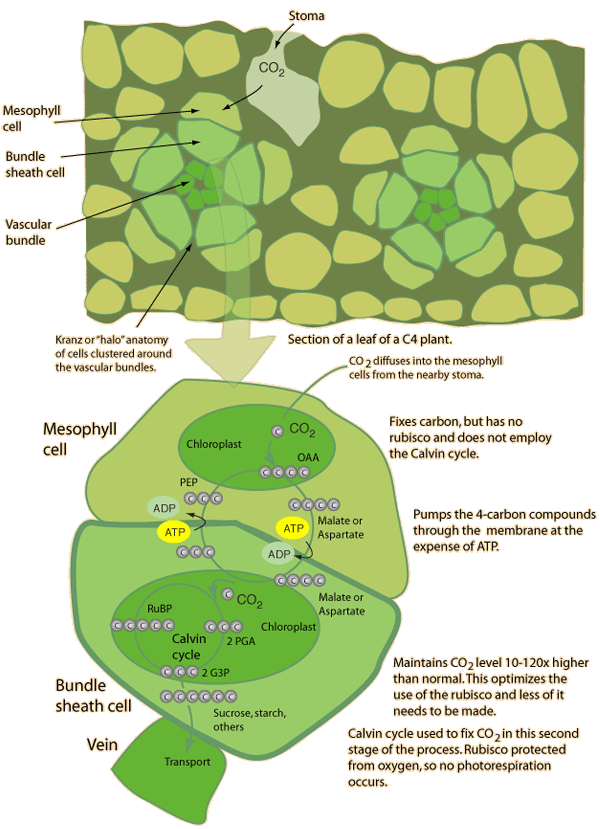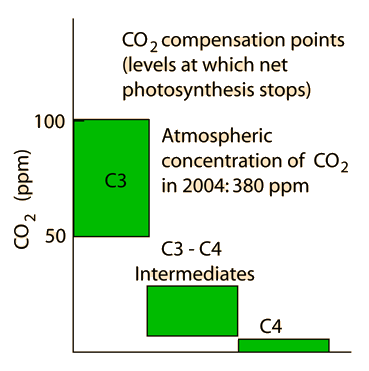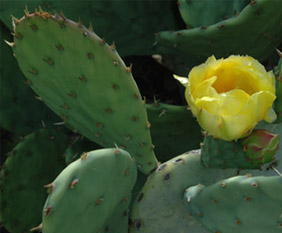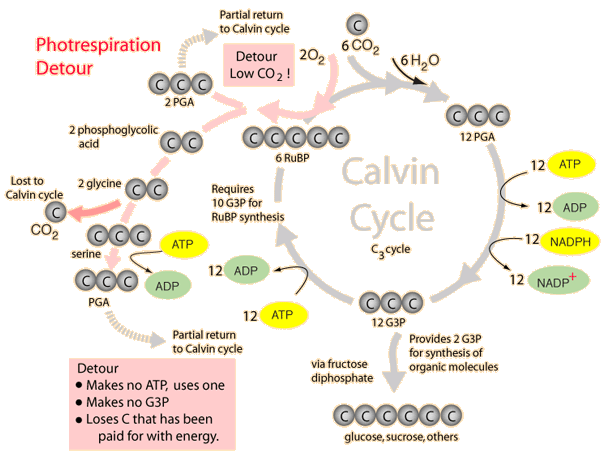C3 Photosynthesis
Plants which use only the Calvin cycle for fixing the carbon dioxide from the air are known as C3 plants. In the first step of the cycle CO2 reacts with RuBP to produce two 3-carbon molecules of 3-phosphoglyceric acid (3-PGA). This is the origin of the designation C3 or C3 in the literature for the cycle and for the plants that use this cycle.
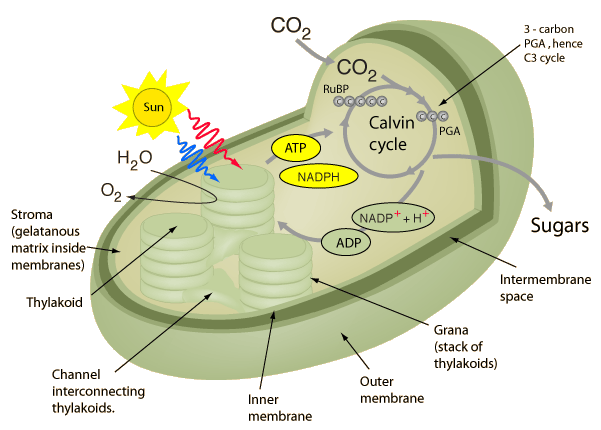
The entire process, from light energy capture to sugar production occurs within the chloroplast. The light energy is captured by the non-cyclic electron transport process which uses the thylakoid membranes for the required electron transport.
About 85% of plant species are C3 plants. They include the cereal grains: wheat, rice, barley, oats. Peanuts, cotton, sugar beets, tobacco, spinach, soybeans, and most trees are C3 plants. Most lawn grasses such as rye and fescue are C3 plants.
C3 plants have the disadvantage that in hot dry conditions their photosynthetic efficiency suffers because of a process called photorespiration. When the CO2 concentration in the chloroplasts drops below about 50 ppm, the catalyst rubisco that helps to fix carbon begins to fix oxygen instead. This is highly wasteful of the energy that has been collected from the light, and causes the rubisco to operate at perhaps a quarter of its maximal rate.
The problem of photorespiration is overcome in C4 plants by a two-stage strategy that keeps CO2 high and oxygen low in the chloroplast where the Calvin cycle operates. The class of plants called C3-C4 intermediates and the CAM plants also have better strategies than C3 plants for the avoidance of photorespiration.
| Energy cycle in living things |
Photosynthesis Concepts
Reference
Moore, et al.
Ch 7
| HyperPhysics***** Biology | R Nave |

